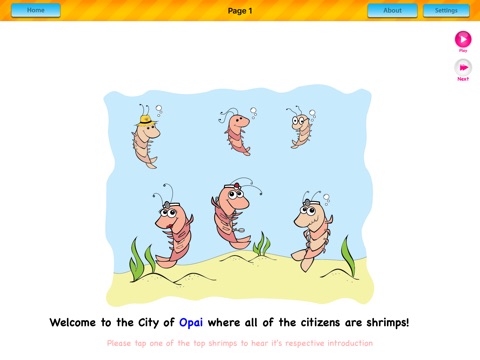
In Dr. Pill’s whimsical city of ‘Ōpae, children will be introduced to the mathematical idea of a unit, an important concept fundamental to later understandings of topics such as number line, place value, and fractions. The mathematics is presented through the context of volume, which, in this story, is the amount of space in a container filled by a special liquid vitamin. In addition, the app is formatted to include opportunities for children to interact with characters and “assist” in some of the actions involving volumes, so children become part of the story.
Simple taps on words, characters, or objects will involve children in the story as it unfolds. For example, words printed in color will reveal additional information or definitions when tapped; tapping a character may show dialogue bubbles with spoken words; and taps on the faucet can initiate measuring actions. In addition, children may be further engaged by asking questions such as, “What might happen next?” or “How will Dr. Healthy’s idea help?” These type of questions help them develop reasoning skills and construct predictions that will support their growth in problem solving and communicating their thinking.
An important part of mathematical practice is attending to precision. Even very young children are capable of developing skills to use appropriate symbols, vocabulary, and labels to communicate their ideas effectively. In this story, it is important to note that each letter is used to represent a specific volume of vitamin. “Volume M” rather than “M” is deliberately used in the narrated text to emphasize this use. The letter on a container labels the volume in the container and is not a label of the container. In fact, each letter is intentionally written below the respective mark on the container to indicate that it represents the total volume filled up to that mark.
We encourage you to follow along and have fun with this story. We hope you find that these opportunities to think about mathematics through measurement lead to foundational ideas your child(ren) will draw upon in their later studies.



